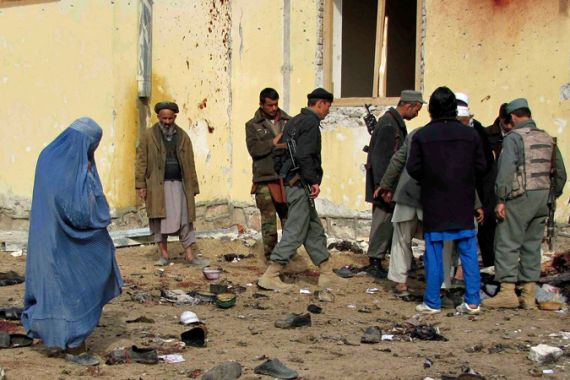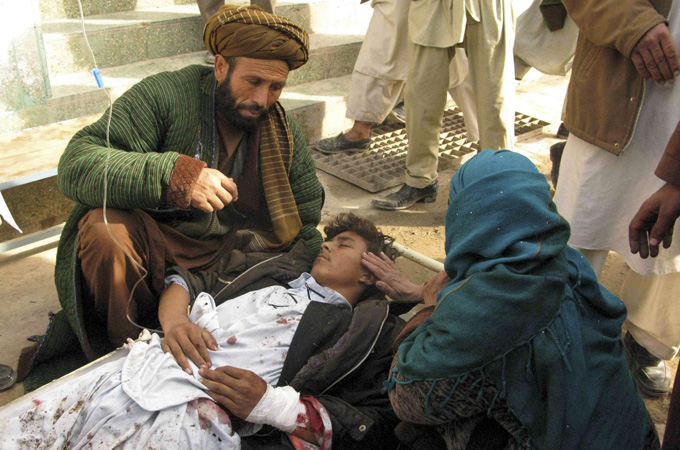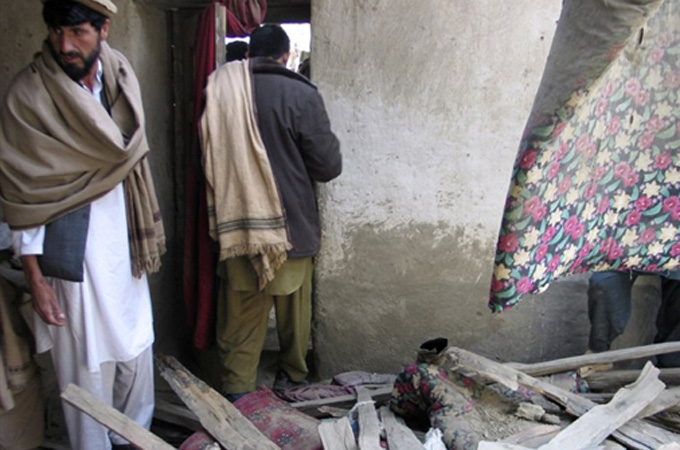Many dead in Afghan suicide bombing
Attack on government office in Kunduz pushes death toll from ongoing surge of violence to more than 100.

 |
| At least 39 people were wounded in the deadly attack [Reuters] |
A suicide bomber has struck an Afghan government office, killing 31 people and raising to more than 100 the death toll from a surge in bomb attacks.
Monday’s attack took place as people queued outside a district office in Imam Sahib, in the northern province of Kunduz, to collect new identity cards and other paperwork.
Mohammad Ayob Haqyar, the district head, said a suicide attacker detonated his explosives in the waiting area.
“The number of people killed in the suicide blast rose to 31”, he said. “Some of the critically wounded also died in hospital. Thirty-nine people are wounded.”
A string of attacks has targeted civilians and government forces over the last three weeks, just a few months before limited withdrawals of US-led NATO forces are due to start in July.
Zabihullah Mujahid, a Taliban spokesman, claimed one of the group’s “hero” members had carried out the attack, which he said targeted an army recruitment centre and killed 30 members of the security forces.
‘Screams everywhere’
A local resident, Mohammad Ismail, described the scene in the hospital where the wounded were being treated as chaotic.
“There are wounded and dead all over the floor in the hospital,” he told the AFP news agency.
“There are bodies with their chopped-off hands or legs next to them in the hospital. It’s a disaster … you can hear screams everywhere.”
 |
|
In the latest setback, NATO forces have been accused by Afghan officials of killing a family of six [AFP] |
Taliban fighters, who have been fighting the government since being toppled from power in the 2001 US-led invasion, routinely deny killing civilians in their attacks.
Taliban fighters have made increasing inroads into the north, expanding from their traditional power bases in the south and east, along the Pakistan border, as they press a nine-year campaign against the government and US-led troops.
Kunduz, in particular, has been volatile in recent months.
Earlier this month, a suicide bomber killed a district governor and two others after walking into an office ostensibly to hand over a letter.
In the deadliest attack in Afghanistan since last June, four suicide bombers killed 38 people on Saturday, apparently targeting police collecting their salaries at a bank in the eastern town of Jalalabad.
On Friday, another nine people died in a car bombing near a district police headquarters in the eastern city of Khost.
String of attacks
The previous week, 19 people, including 15 police and an Afghan intelligence agent, died when suicide bombers armed with guns, grenades and car bombs targeted police in Afghanistan’s de facto southern capital, Kandahar.
There have also been two attacks in Kabul in recent weeks – on January 28, when eight people were killed at a supermarket popular with Westerners, and on February 14, when two died at a shopping mall.
The Afghan police and army are due to take responsibility for security from 2014, allowing the bulk of international troops to withdraw. There are currently around 140,000 international military personnel in Afghanistan fighting the Taliban.
Afghan officials have accused NATO troops in recent days of causing mass civilian casualties in operations – a highly sensitive subject in the fight to win hearts and minds while defeating the Taliban.
On Monday, local officials accused NATO forces of killing a family of six in an air attack, a day after Hamid Karzai, Afghanistan’s president, said 50 innocent people had died in aerial attacks nearby over the course of five days.